-
 Bitcoin
Bitcoin $115200
-2.68% -
 Ethereum
Ethereum $3601
-5.16% -
 XRP
XRP $3.035
-2.96% -
 Tether USDt
Tether USDt $0.9997
-0.04% -
 BNB
BNB $764.5
-5.43% -
 Solana
Solana $168.1
-5.92% -
 USDC
USDC $0.9998
-0.02% -
 Dogecoin
Dogecoin $0.2090
-4.80% -
 TRON
TRON $0.3272
-0.49% -
 Cardano
Cardano $0.7306
-5.00% -
 Hyperliquid
Hyperliquid $39.16
-12.22% -
 Stellar
Stellar $0.3967
-4.96% -
 Sui
Sui $3.566
-5.95% -
 Chainlink
Chainlink $16.55
-6.57% -
 Bitcoin Cash
Bitcoin Cash $552.3
-3.90% -
 Hedera
Hedera $0.2516
-4.69% -
 Avalanche
Avalanche $21.99
-5.75% -
 Toncoin
Toncoin $3.621
-0.28% -
 Ethena USDe
Ethena USDe $1.000
-0.03% -
 UNUS SED LEO
UNUS SED LEO $8.951
0.02% -
 Litecoin
Litecoin $105.9
-3.59% -
 Shiba Inu
Shiba Inu $0.00001232
-5.00% -
 Polkadot
Polkadot $3.640
-5.55% -
 Uniswap
Uniswap $9.048
-7.03% -
 Monero
Monero $301.8
-1.51% -
 Dai
Dai $0.9999
-0.01% -
 Bitget Token
Bitget Token $4.334
-3.66% -
 Pepe
Pepe $0.00001064
-6.17% -
 Cronos
Cronos $0.1367
-5.78% -
 Aave
Aave $259.2
-4.59%
How to stake tokens in Trust Wallet? The complete process of earning income
Staking BNB or TRX in Trust Wallet is easy: add tokens, choose a validator for BNB, enter stake amount, confirm, and wait for blockchain confirmation to earn rewards.
May 18, 2025 at 12:01 am
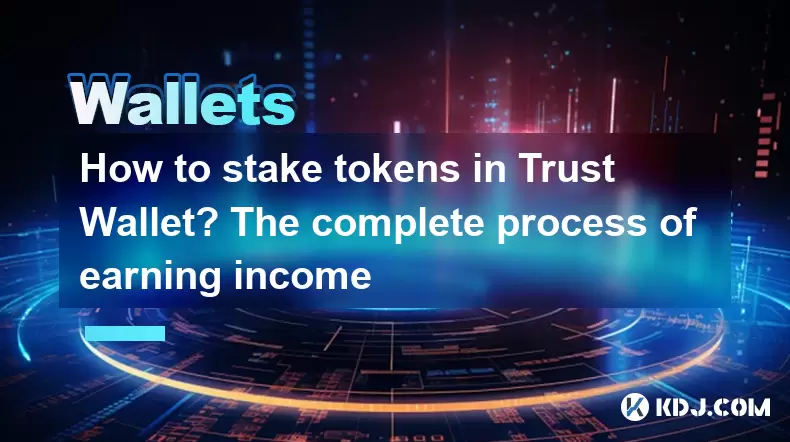
Staking tokens in Trust Wallet is a straightforward process that allows users to earn passive income on their cryptocurrency holdings. Trust Wallet, a popular mobile wallet, supports staking for several cryptocurrencies, including major ones like BNB, TRX, and others. This article will guide you through the complete process of staking tokens in Trust Wallet, ensuring you understand every step to start earning income.
Understanding Staking in Trust Wallet
Staking in the context of cryptocurrencies refers to the process of holding funds in a cryptocurrency wallet to support the operations of a blockchain network. In return, participants earn rewards, typically in the form of additional tokens. Trust Wallet makes staking accessible by integrating it directly into the app, allowing users to stake without needing to transfer their assets to another platform.
To begin staking, it's essential to have a basic understanding of the tokens you wish to stake. Different cryptocurrencies have different staking requirements and reward structures. For example, BNB (Binance Coin) and TRX (Tron) have their own specific staking mechanisms within Trust Wallet.
Preparing Your Trust Wallet for Staking
Before you can start staking, ensure that your Trust Wallet is set up and ready. Here's what you need to do:
- Download and Install Trust Wallet: If you haven't already, download the Trust Wallet app from the App Store or Google Play Store. Follow the prompts to set up your wallet.
- Add the Tokens You Want to Stake: Open Trust Wallet, and if the tokens you want to stake are not already in your wallet, you can add them by clicking on the top right icon (the plus sign), selecting "Add Custom Token," and entering the token's details.
- Fund Your Wallet: Ensure you have enough of the token you want to stake in your Trust Wallet. You can buy tokens directly within the app or transfer them from another wallet or exchange.
Staking BNB in Trust Wallet
To stake BNB in Trust Wallet, follow these steps:
- Open Trust Wallet and Navigate to BNB: Tap on the BNB icon on your wallet's main screen.
- Access Staking: Scroll down to the "Staking" section and tap on "Stake BNB."
- Choose a Validator: You'll see a list of validators. Select one based on their commission rate and performance. Validators are nodes on the Binance Chain that help process transactions and create new blocks.
- Enter the Amount to Stake: Decide how much BNB you want to stake. Keep in mind that you'll need to leave some BNB unstaked to cover transaction fees.
- Confirm the Transaction: Review the details, and if everything looks correct, confirm the transaction. You'll be prompted to enter your wallet password.
- Wait for Confirmation: The staking process will take some time to complete as it needs to be confirmed on the Binance Chain.
Staking TRX in Trust Wallet
Staking TRX in Trust Wallet involves a similar process but with some differences due to the Tron network's unique features:
- Open Trust Wallet and Navigate to TRX: Tap on the TRX icon on your wallet's main screen.
- Access Staking: Scroll down to the "Staking" section and tap on "Stake TRX."
- Enter the Amount to Stake: Decide how much TRX you want to stake. Unlike BNB, TRX staking does not require choosing a validator.
- Confirm the Transaction: Review the details, and if everything looks correct, confirm the transaction. Enter your wallet password when prompted.
- Wait for Confirmation: The staking process will take some time to complete as it needs to be confirmed on the Tron network.
Managing Your Staked Tokens
Once your tokens are staked, you can manage them through the Trust Wallet app. Here's how:
- View Staking Rewards: Go to the BNB or TRX section in your wallet, and you'll see your staking rewards displayed. These rewards are typically distributed periodically, depending on the network's rules.
- Unstaking Tokens: If you need to access your staked tokens, you can unstake them. For BNB, go to the "Staking" section, select the validator you staked with, and choose "Unstake." For TRX, go to the "Staking" section and select "Unstake." Note that there may be a waiting period before you can access your unstaked tokens.
- Reinvesting Rewards: You can choose to reinvest your staking rewards to compound your earnings. Simply transfer the rewards back into your staking pool.
Security Considerations When Staking in Trust Wallet
When staking tokens, it's crucial to keep security in mind. Here are some tips to ensure your assets remain safe:
- Enable Two-Factor Authentication (2FA): Trust Wallet supports 2FA, which adds an extra layer of security to your account.
- Backup Your Wallet: Always keep a secure backup of your recovery phrase. This is essential for recovering your wallet if you lose access to your device.
- Be Wary of Phishing Attempts: Never share your recovery phrase or private keys with anyone. Be cautious of emails or messages that ask for this information.
Frequently Asked Questions
Q: Can I stake multiple types of tokens in Trust Wallet?
A: Yes, Trust Wallet supports staking for multiple cryptocurrencies, including BNB, TRX, and others. You can stake different tokens simultaneously, provided you have enough of each token in your wallet.
Q: How often are staking rewards distributed in Trust Wallet?
A: The frequency of staking rewards depends on the specific cryptocurrency and its network rules. For BNB, rewards are typically distributed every block, while for TRX, rewards are distributed daily.
Q: What happens if I want to unstake my tokens before the staking period ends?
A: If you unstake your tokens before the staking period ends, you may be subject to a waiting period before you can access your tokens. This waiting period varies by cryptocurrency; for example, BNB has a 7-day unbonding period, while TRX has a 3-day unbonding period.
Q: Can I use my staked tokens for other transactions while they are staked?
A: No, once your tokens are staked, they are locked and cannot be used for other transactions until you unstake them. However, you can still receive staking rewards during this period.
Disclaimer:info@kdj.com
The information provided is not trading advice. kdj.com does not assume any responsibility for any investments made based on the information provided in this article. Cryptocurrencies are highly volatile and it is highly recommended that you invest with caution after thorough research!
If you believe that the content used on this website infringes your copyright, please contact us immediately (info@kdj.com) and we will delete it promptly.
- Cardano Price, Pi Network, and Crypto Presales: What's the Buzz?
- 2025-08-02 08:50:12
- XRP Fund Success: Teucrium CEO Reveals Trillions on the Horizon
- 2025-08-02 09:10:12
- Challenge Coins: More Than Just Collectibles – A Military Tradition
- 2025-08-02 08:30:12
- Under the Radar: Hunting for 100x Crypto Gems in a Pi Network World
- 2025-08-02 08:30:12
- Bitcoin, Solana, and Altcoin Season: What's Hot and What's Not?
- 2025-08-02 07:10:12
- Toncoin, Rollblock, and the Token Offering Landscape: A New York Minute
- 2025-08-02 07:10:12
Related knowledge

What is a watch-only wallet in Trust Wallet?
Aug 02,2025 at 03:36am
Understanding the Concept of a Watch-Only WalletA watch-only wallet in Trust Wallet allows users to monitor a cryptocurrency address without having ac...
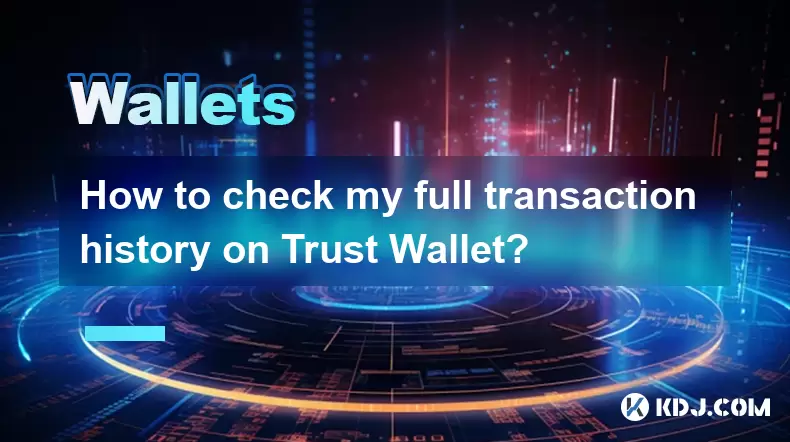
How to check my full transaction history on Trust Wallet?
Aug 02,2025 at 09:24am
Understanding Transaction History in Trust WalletTrust Wallet is a widely used non-custodial cryptocurrency wallet that supports a broad range of bloc...
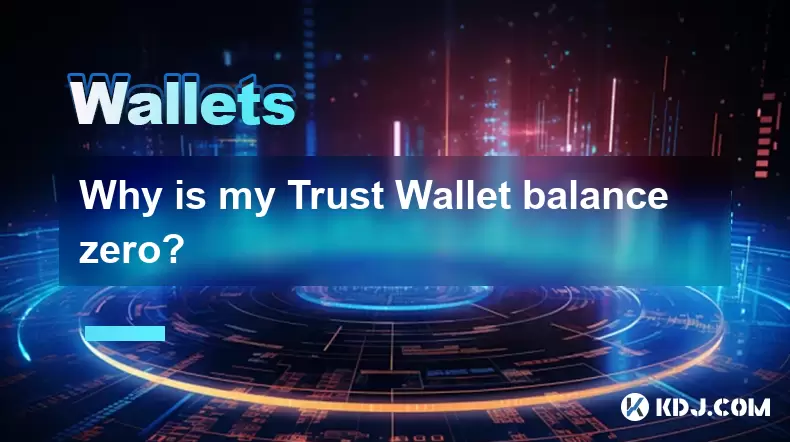
Why is my Trust Wallet balance zero?
Aug 02,2025 at 03:49am
Understanding Trust Wallet Balance Display IssuesIf you're seeing a zero balance in your Trust Wallet despite knowing you've previously received or se...
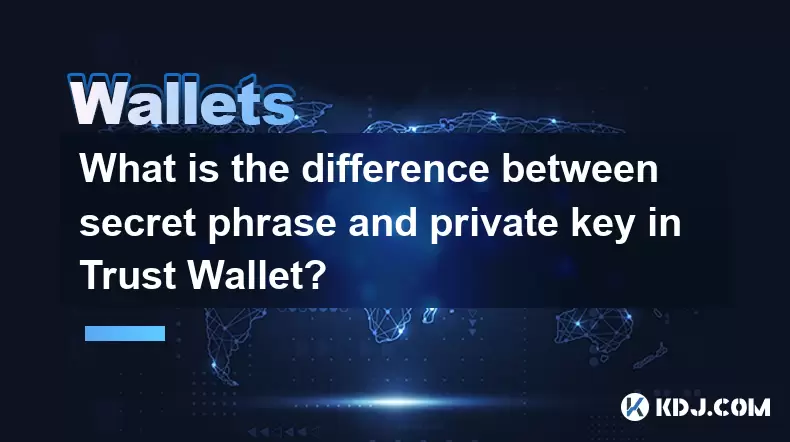
What is the difference between secret phrase and private key in Trust Wallet?
Aug 02,2025 at 09:49am
Understanding the Role of a Secret Phrase in Trust WalletThe secret phrase, also known as a recovery phrase or seed phrase, is a sequence of 12 or 24 ...
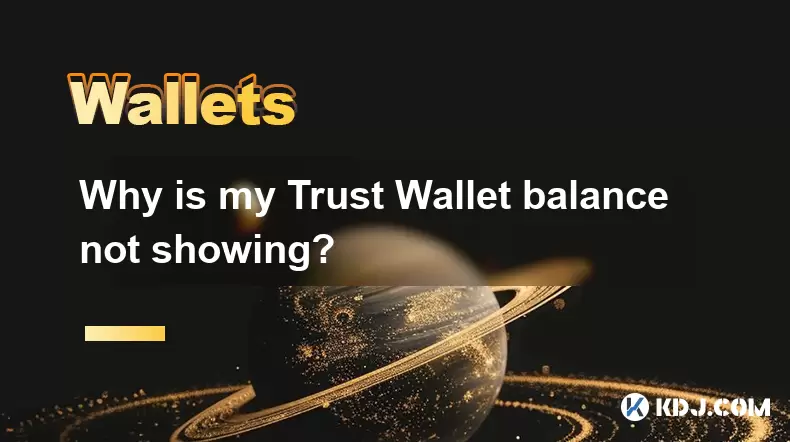
Why is my Trust Wallet balance not showing?
Aug 02,2025 at 06:01am
Understanding Trust Wallet Balance Display IssuesMany users encounter the issue where their Trust Wallet balance is not showing despite having previou...
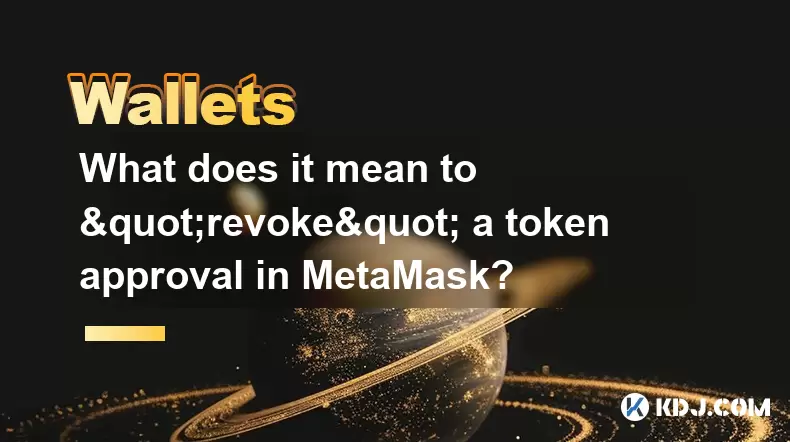
What does it mean to "revoke" a token approval in MetaMask?
Aug 02,2025 at 02:57am
Understanding Token Approvals in MetaMaskWhen interacting with decentralized applications (dApps) on Ethereum or EVM-compatible blockchains, users oft...

What is a watch-only wallet in Trust Wallet?
Aug 02,2025 at 03:36am
Understanding the Concept of a Watch-Only WalletA watch-only wallet in Trust Wallet allows users to monitor a cryptocurrency address without having ac...

How to check my full transaction history on Trust Wallet?
Aug 02,2025 at 09:24am
Understanding Transaction History in Trust WalletTrust Wallet is a widely used non-custodial cryptocurrency wallet that supports a broad range of bloc...

Why is my Trust Wallet balance zero?
Aug 02,2025 at 03:49am
Understanding Trust Wallet Balance Display IssuesIf you're seeing a zero balance in your Trust Wallet despite knowing you've previously received or se...

What is the difference between secret phrase and private key in Trust Wallet?
Aug 02,2025 at 09:49am
Understanding the Role of a Secret Phrase in Trust WalletThe secret phrase, also known as a recovery phrase or seed phrase, is a sequence of 12 or 24 ...

Why is my Trust Wallet balance not showing?
Aug 02,2025 at 06:01am
Understanding Trust Wallet Balance Display IssuesMany users encounter the issue where their Trust Wallet balance is not showing despite having previou...

What does it mean to "revoke" a token approval in MetaMask?
Aug 02,2025 at 02:57am
Understanding Token Approvals in MetaMaskWhen interacting with decentralized applications (dApps) on Ethereum or EVM-compatible blockchains, users oft...
See all articles

























































































